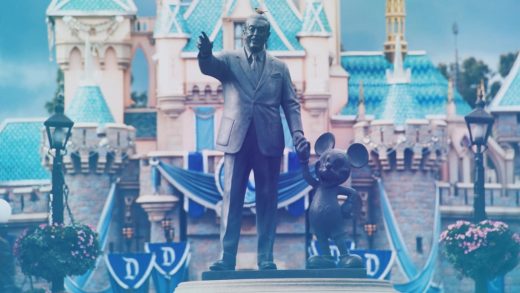Volume bad! Quality good! Can Disney beat Netflix with this strategy?
On Disney’s third-quarter earnings call on Tuesday, chairman and CEO Bob Iger revealed more details about the company’s OTT strategy, making one thing very clear: Disney is not trying to be Netflix.
Repeating a message he’s said before, but with more granular details this time, Iger said that Disney is “not in the volume game” when it comes to its new digital apps, most notably the family entertainment app that Disney is launching in late 2019. That service will be loaded up with movies and TV shows from–and based on–Disney premium brands like Star Wars, Marvel, and Pixar, as well at Nat Geo, which Disney will soon own thanks to its almost $72 billion acquisition of 21st Century Fox. But Iger stressed that it will not be following the path of Netflix, which is releasing more original movies this year than all of the Hollywood studios combined.
“We want to be in the quality game,” Iger said. “Netflix is in the high volume game. We don’t really need to do that.” Amazon has stated in the last several months under new chief Jennifer Salke that it, too, is not interested in volume. Meanwhile, HBO is reputedly being asked by its new corporate parent AT&T to bulk up to compete.
He went on to say that the price of the new service will reflect its slimmer portfolio–i.e., it will be cheaper than Netflix. (Though it is not clear if Disney’s service plus Hulu, which will have all of Disney’s adult fare, will be more expensive than a single Netflix subscription.)
Speaking of Hulu, Iger also put to rest the idea, posited by some analysts, that Disney would be putting most of its OTT eggs in Hulu, which it will own 60% of once the Fox deal closes. Rather, he reiterated that next year the companywide priority will be launching the Disney entertainment app, which will complement ESPN Plus, the sports app that the company launched earlier this year and that Iger said is performing better than expected. (He declined to offer specifics.)
He also said that Disney is not making “an aggregation play” by combining all of its OTT assets in one service, but instead will be offering consumers three options–sports, family entertainment, and Hulu–as that best reflects how people consume content. Viewers prefer to “make decisions on their own in terms of what kind of packages they want,” Iger said.
Still, Disney will offer a bundled package to consumers who want to sign up for all three of the apps, though Iger did not go into details as to how that would be priced.
Disney’s bet is based on the idea that Disney’s content is so premium, and in such demand, that less is ultimately more. In other words, that Rogue One: A Star Wars Story or Incredibles 2 are such powerful titles that they alone will have droves of people signing up for a Disney app. Of all media companies out there, Disney can make this claim more plausibly than anyone.
But there is also something somewhat antiquated about the notion of only having a limited number of TV shows and movies, as it implies that people will simply want to watch those same titles over and over again. Does that in fact reflect the way people consume content in 2018, the age of Snapchat, Facebook and YouTube, which supply us with new blasts of content on a second-by-second, scrolling basis?
Disney will also be making spin-off TV shows and original content to buffer its more known entities, but the primary selling point of the service isn’t the Monsters, Inc. spin-off show: It’s the next Star Wars movie.
Iger said a few times on the call that Disney is going to “walk before it runs” when it comes to its new app, and that it wants to get its portfolio ready before going to market. Fair enough. Disney’s licensing deal with Netflix hasn’t expired yet, so if the app launched today Disney’s latest movies wouldn’t be on it, and it still has a large amount of animated content on Hulu, and it remains to be seen if it leaves it there.
The timing still feels slow in streaming terms, seeing as the service was announced a full year ago and won’t be arriving until another year-plus has passed. Especially considering that as the world’s biggest entertainment company, Disney could, if it wanted to, load up an app’s worth of content overnight. It also has the tech muscle to do it: BAMTech, the streaming company in which it bought a controlling stake in order to build out the back end of its services, proved with HBO Now back in 2015 that it can fire up a new streaming app in a couple months’ time.
All the while, Netflix continues to notch up more new subscribers, quarter after quarter. Disney’s stance is that it doesn’t care; it’s playing a different game. In 2019, it will be interesting to see if that’s still the case.
(23)



